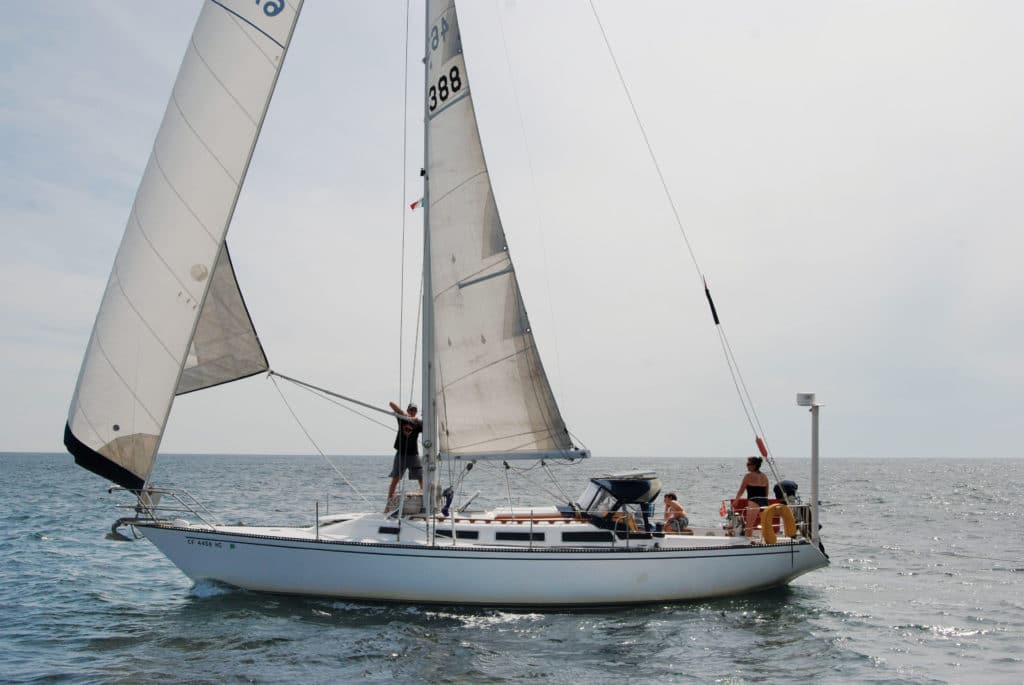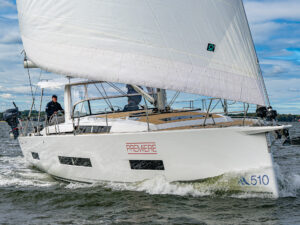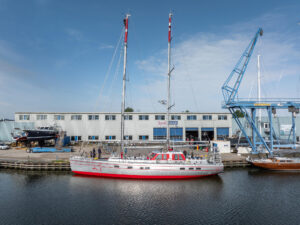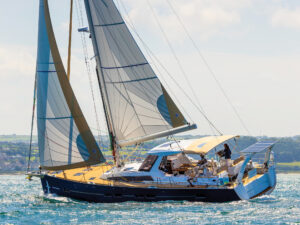
Catalina 38
In 1978, Catalina Yachts was a young company with a Midas touch, enjoying brisk sales of its sailboats from 22 to 30 feet, all of them designed and built in house. And then company owner Frank Butler tried something different. He bought the mold for the Yankee 38, designed by Sparkman & Stephens and descended from a successful one-off IOR aluminum raceboat, from the bankrupt Yankee Boat Co. Butler saw this competitive racer as a flagship that would raise the profile of the Catalina fleet. He was right. In 1980, the Catalina 38 was selected for the prestigious Congressional Cup. The company went on to build 366 Catalina 38s over the next 14 years.
Butler made significant changes to the S&S design. He replaced the skeg-hung rudder with a balanced spade rudder and created a high-aspect-ratio rig with a taller mast and shorter boom. He redesigned the interior for weekender livability and the deck and trunk cabin to match Catalina aesthetics.
Other aspects of the dated racing design — long overhangs, generous tumblehome and a pert little reverse transom — give the Catalina 38 its pleasing lines. Butler’s redesigned deck gives it a sleek, low profile but narrow side decks are a result of those changes. Passage from the cockpit to the foredeck can be tricky, especially if a wide dodger is fitted.
With its pedigree, it’s no surprise that owners report the Catalina 38 sails to windward like it’s on rails and also sails beautifully in light air. That superior upwind performance comes with a draft that approaches 7 feet, a limiting factor for some cruising sailors.
Boats designed to the IOR have a reputation for poor manners and instability downwind. But that reputation was earned under race conditions when boats were intentionally overpowered and driven hard. A cruising couple is unlikely to push any boat to the brink of broaching, and many find the IOR warhorses, including the Catalina 38, in fact make fine cruising boats.
Down below, the major interior components are incorporated into a molded hull liner. Teak trim and veneer are used for doors, drawer facings and bulkheads. In early models the cabin sole was fiberglass, but in later models it was covered with teak and holly veneer.
The keel-stepped mast abuts the bulkhead forward of the main saloon. Forward of the bulkhead are the head to port, lockers to starboard and the V-berth, which easily accommodates two adults.
A U-shaped dinette to port (that converts to a double berth) is the main feature in the saloon. Aft of the dinette is a snug U-shaped galley.
On the starboard side of the saloon is a long settee with stowage behind and beneath it. A nav station backs up to a quarter berth that extends under the cockpit.
Owners with cruising plans might find the tankage limiting, but they should avoid adding weight in the bow and stern of this fine-ended boat.
The Atomic 4 gasoline engine was fitted in very early boats but many have been replaced. The 24-horsepower Universal diesel in later ones reportedly lacks the power to push the boat at hull speed in moderate wind and chop. Engine access is adequate.
The Catalina 38 enjoys a loyal following, and owners praise its design, build quality and performance. Rare for boats of this vintage, the builder is still in business, and provides design and parts support. Asking prices range from $25,000 to $75,000, with older boats at the lower end of the bracket.
This article first appeared in the February 2014 issue of Cruising World. Click here to see more sailboats from Catalina.








